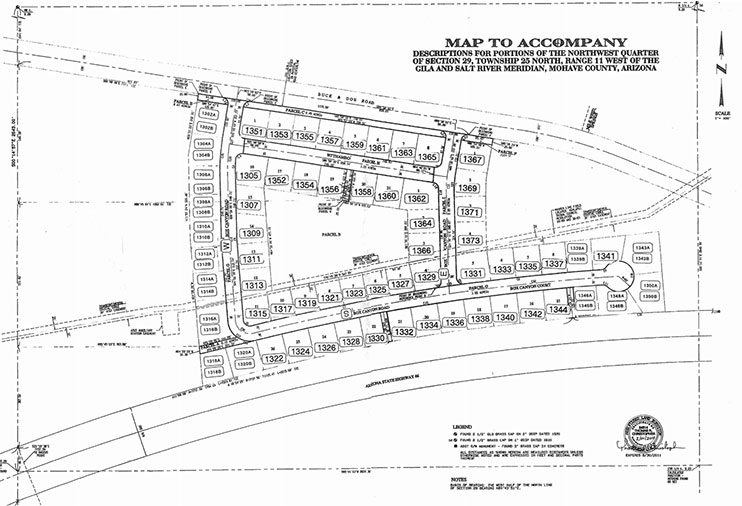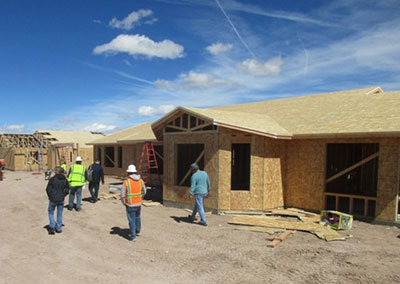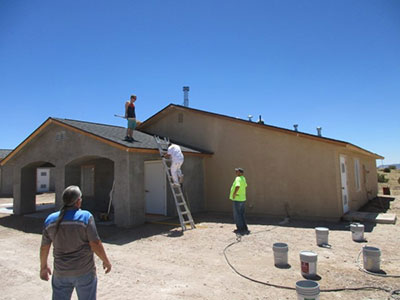By Elizabeth Zach, RCAC staff writer
Peach Springs, AZ – In August 2016, Jamie Navenma drew on his nearly 25 years of experience working in Tribal homeownership as he surveyed housing on the Hualapai Indian Reservation in northwestern Arizona. What he saw both encouraged and distressed him.
“With a wait list that is currently over 60 families,” he wrote back then, “we are committed to working together to identify housing areas, infrastructure needs and future expansion requirements, and to initiating construction of at least 25 initial homes.”
His observations as then-housing director for the Hualapai Tribe later formed the basis of an application to participate in an intensive training to address a severe housing shortage on the Tribe’s land.
The training program called the Tribal Housing Excellence Academy (THE Academy), is a Rural Community Assistance Corporation (RCAC) initiative that teaches Tribal housing agencies how to leverage funds to increase the number of homes for their members on Native lands.
THE Academy is an incubator for new skills and strategies to develop and finance housing, a forum to discuss issues of governance, culture and public policy unique to Tribes.
Launched in 2014, in partnership with Native Capital Access (NCA), THE Academy offers five intensive week-long trainings held over 18 months. Tribal housing agencies selected for the program can send two staff people to the training. The focus is on expanding capacity, as participants work on housing projects—like Hualapai’s—outlined in their applications.
The Hualapai Tribe application required an action plan to be considered for the program. The Tribe planned to build up to 30 homes for higher income families, which were at the time in homes for lower-income renters; then to provide houses for another group of families that had been denied low-income housing because their incomes were just slightly above the threshold limit.
It was an ambitious plan, but Navenma was confident of the potential results.
“We know,” Navenma wrote in the application, “that this project will provide a much needed opportunity for families that are financially capable of paying market rates for homes they will own and can build equity in their homes that can be used for other opportunities the families may need in the future. It will also provide relief to the high number of families that have been on the low-income wait list for years and will provide homes to at least 45 percent of the wait list.”

THE Academy is an incubator for new skills and strategies to develop and finance housing, a forum to discuss issues of governance, culture and public policy unique to Tribes.
For Kevin Davidson, who has worked for the Hualapai since May 2012 as their planning and economic development director, THE Academy proved beneficial, even though he had spent many years working in urban planning. He participated in the training last year.
“When I started in my job, I was 49,” he says. He worked as a planner for Mohave County, Arizona, before taking his current position. “I thought that maybe it was time to jump out of my safety zone and to see what I could do as a director.”
At THE Academy, Davidson jokes, he learned a lot about acronyms, and important ones at that, including NEPA (the National Environmental Policy Act) and LIHTC (low-income housing tax credits). But these and other lessons have helped him rethink affordable and sustainable housing.
The Hualapai, according to Davidson, have about 140 available rental homes but more housing is needed.
The Hualapai number about 2,300, with a median age of 25.4 years. As with other Tribes around the country, young people often move away from the Reservation once they finish high school. The Hualapai Tribe’s median annual household income is $36,250; and housing is of primary concern.
“A recently completed housing needs assessment shows that homes on the Hualapai Reservation are overcrowded,” states the Tribe’s THE Academy application. “In order to alleviate crowding for the 866 individuals living in units with more than one person per bedroom, 320 bedrooms are needed. The average Hualapai household has 5.3 people per household, which requires the addition of 125 units in order to alleviate existing crowding.”
Davidson confirmed this essential problem.
“A handful of people who are living in the affordable rental homes that are available actually have a little higher income than they should,” he said. “The housing department has to make room for them while still helping the lower income residents on the waiting list.” Some, he added, have removed themselves from the waiting list, “because they got tired of waiting.” But, at the same time, “There are many Tribal members from out of state who would like to relocate to the Reservation, namely baby boomers.”


Until 1996, the U.S. Department of Housing and Urban Development, or HUD, governed and guided housing development in Tribal communities. The Native American Housing Assistance and Self-Determination Act (NAHASDA), which was passed that year, significantly changed the model, moving all HUD funding for Tribes into a block grant program that allows Tribes to structure their own housing projects. There are many advantages to this autonomy, however, Tribes continue to struggle to meet the housing needs of all their members, in particular for very low-income families, as well as workforce housing for teachers, health care workers and public safety officers.
Regardless of the change in approach, HUD funds are inadequate. In addition, Tribes have historically faced unique challenges to build on trust land, encountered difficulties to attract outside, private financing to their developments, and continue to face internal issues around capacity and attracting experienced staff.
The Hualapai’s housing challenges are therefore not unlike those of other Tribes. But in 2012, the Hualapai Housing Department made some headway to overcome them. The Tribe completed nine homes, which, together with infrastructure, totaled $2.2 million. This was part of a $40 million project called Box Canyon Subdivision. Four were low-income rental units, and the others were for ownership. During the past year, Davidson’s Planning Department launched a pilot program to construct three homes in Box Canyon that will be sold to Tribal members who can qualify for a home loan. This will allow those that rent in Peach Springs or elsewhere to buy a home of their own on the Hualapai Reservation. All in all, the Tribe hopes to expand the number of new houses to 30. At the same time, the Housing Department completed major rehabilitation on 13 homes for low-income renters.
“Housing’s rehabilitation program is perpetual,” Davidson notes. “Building ownership homes with Tribal general funds is new. Developing a home-buyer program for these homes is also new. We can thank RCAC for guidance on these fronts.”
Eileen Piekarz, RCAC’s lead trainer for THE Academy said “The Hualapai Tribe is coming at their housing need from several angles by creating ownership opportunities for higher income families, planning new rental housing for lower-income families, and rehabbing once-vacant houses. It’s a great approach.”
“Having the housing and planning departments working side-by-side has allowed Hualapai to achieve more and serve a broader range of families than would be possible by either department alone” Piekarz said.
